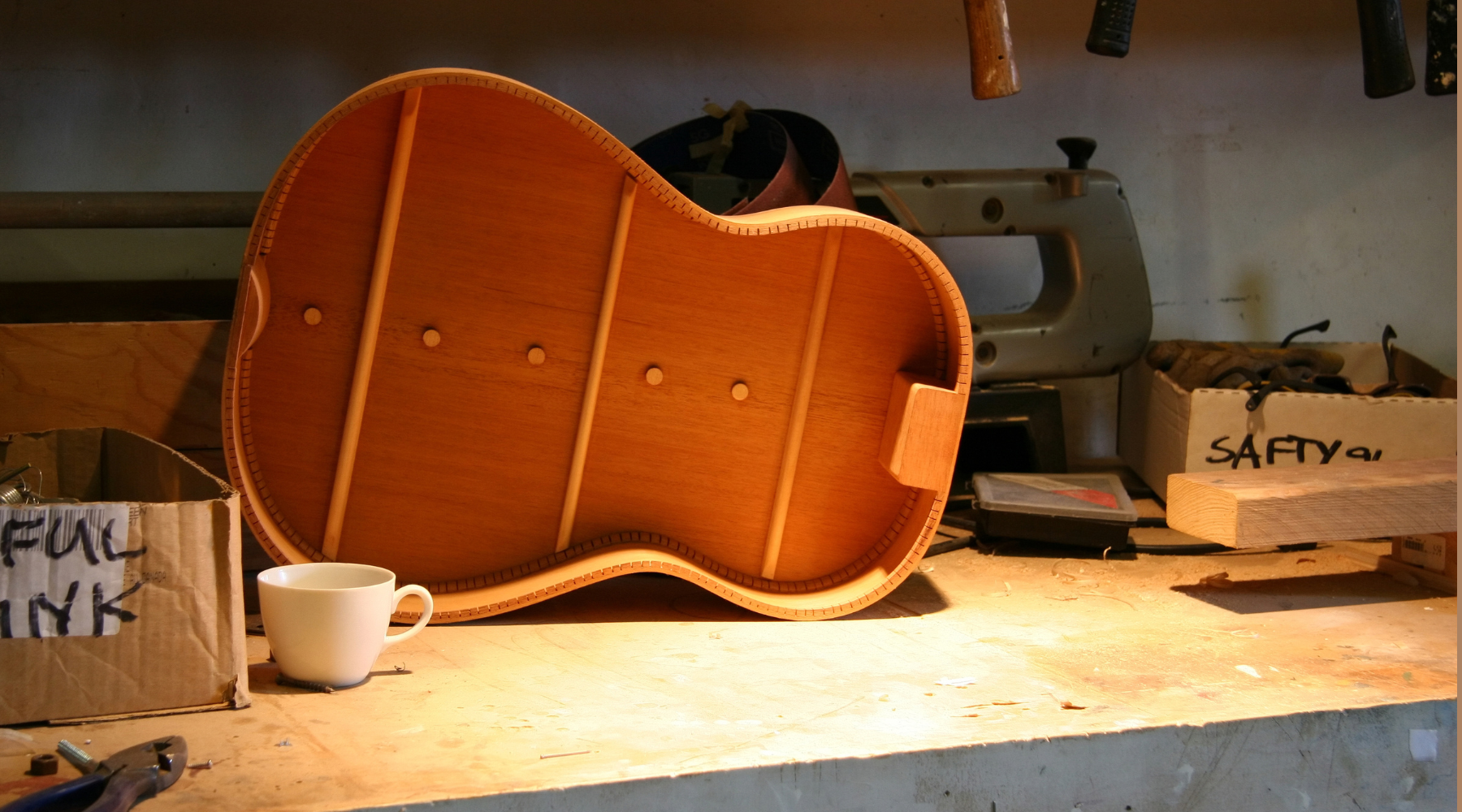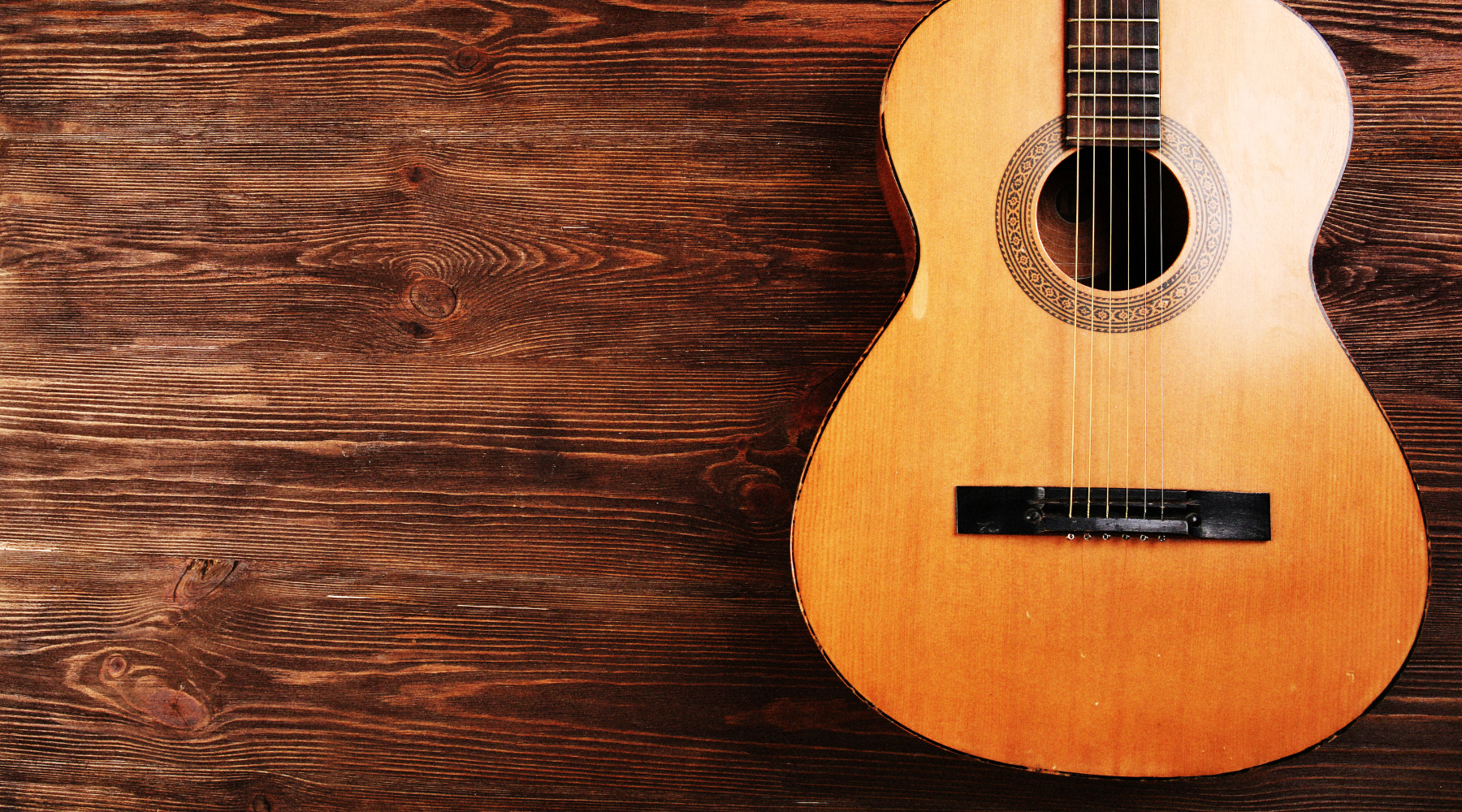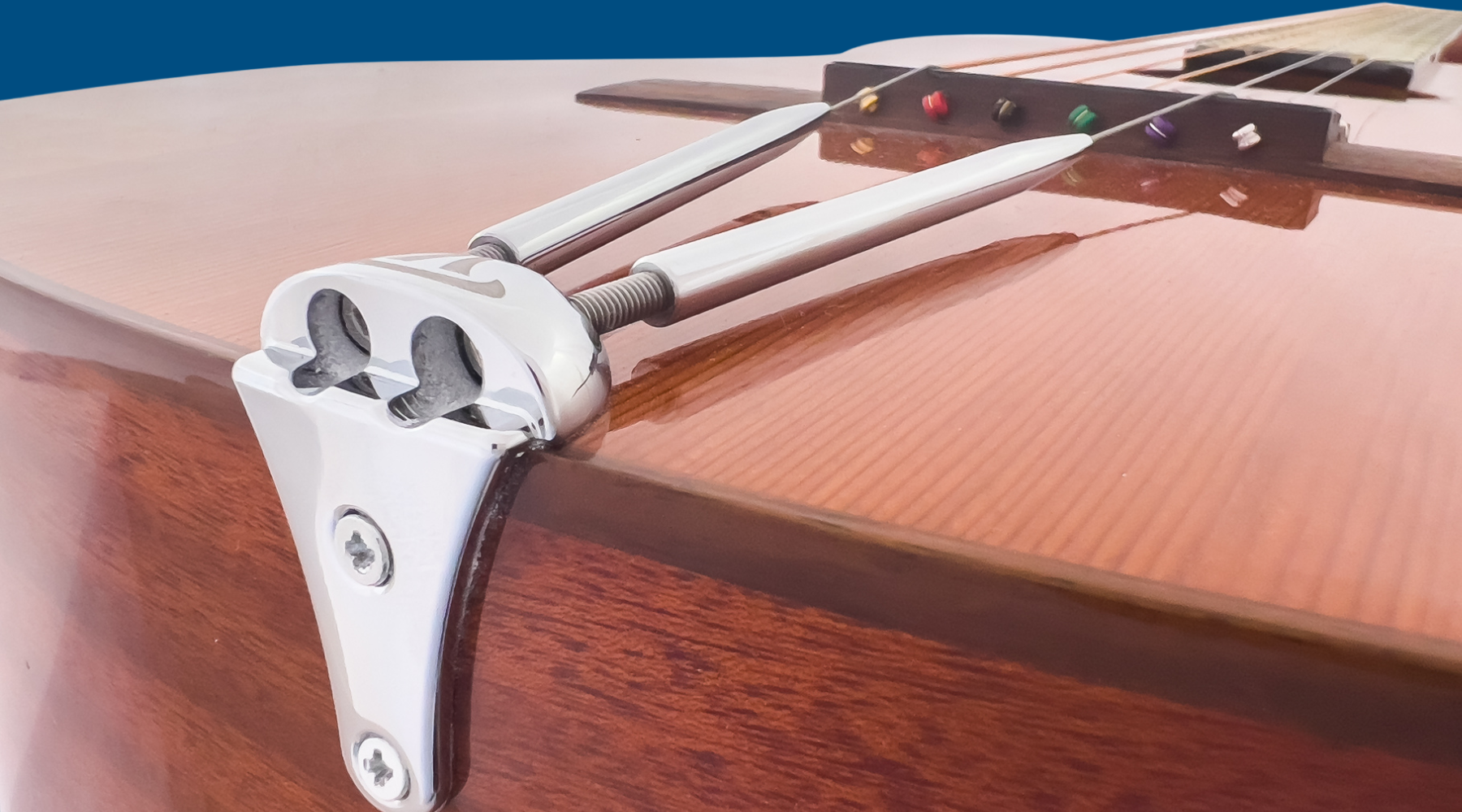Typically, acoustic guitars are built with the strings anchored at the bridge. This forces the soundboard to perform two roles: providing a critical structural anchor and, obviously, amplifying and tempering the vibrations of the played strings (making it sound like a guitar).
Commercial Guitars Are Overbuilt
Guitar soundboards are built to withstand the huge tension force (140-190 lbs) of the guitar strings. That’s enough tension to lift a grown man off the ground. What's more, guitar manufacturers have to provide a “safety factor” so that none of their guitars need to be returned due to deformation of the soundboard. Returns are expensive for guitar companies. In addition to the obvious cost of having to accept the returned guitar and ship a replacement, the company also risks damage to its reputation whenever there is a return due to a structural failure. Too many returned guitars can ruin a guitar company.
So, it is easier, safer, and more economical for big guitar companies to continue to sell guitars that are “sturdier” than necessary.
Lightly Built Classical Guitars
The most lightly built acoustic guitar type currently manufactured is the classical guitar. Just pick one up, and you will feel the difference. Tap on the soundboard, and you will hear the difference. Unfortunately, before the invention of the TurboTail, classical guitars could only be played with nylon strings. This is a shame, since classical guitar builds are so amazing. In fact, when we take our classical builds, set up with steel strings and the TurboTail to luthier guitar shows, they are by far the lightest builds at the show. Even steel-string guitars costing $30,000 are built heavier than student-quality classical builds. Generally, the most expensive custom steel string guitars of the same size weigh between 8 ounces and 1 pound more than our test classical guitars. This is a really big deal. Especially since some of that extra weight is in the soundboard, where all the vibrations are received directly from the strings.
Custom-Built Guitars
Custom guitar builders work hard to reduce the mass of the soundboard by thinning the soundboard itself, as well as by meticulously shaving the braces until they believe that the risk of removing more material is too high to continue shaving. Some builders refer to this as shaving braces to the very "Brink of Disaster. One degree of brace reduction too far will cause the soundboard to begin to deflect beyond what is acceptable. Such a guitar may have a wonderful tone, with plenty of volume, but it will not last long. That's why even renowned custom builders err on the side of caution, leaving surplus material on the braces and soundboard. Their best guitars invariably fall short of their potential.
"Free The Soundboard" - with The TurboTail
The TurboTail can be used to great effect by guitar builders and manufacturers. These artisans recognize the improved efficiency that the TurboTail offers, and they have the skills to take advantage of these benefits to improve their own line of guitars.
With TurboTail, every guitar builder can approach soundboard construction as a purely sonic issue. The builder is no longer required to design the soundboard to handle structural loads first, and only afterwards attempt to shape the desired tone or “voice”.
Tone bars only?
Using the TurboTail means that instead of installing “top bracing” to handle structural loads before installing “tone bars” to optimize tone, the installation of top bracing can be skipped altogether.
Tone bars are all that is required, no bracing is needed. Tone bars, as their name implies, are used to fine-tune the guitar's sound. The key benefit of the TurboTail is that the luthier is free to create a guitar in however he or she desires, without the need to compensate for structural load as an over-riding concern. Builders can produce a better instrument when they focus on the tone of the guitar instead of having to dedicate so much of their efforts to addressing structural problems.
Guitar Design Dreams Come True
For custom builders, this means that the TurboTail gives them options for taking their guitars to a level of delicacy and nuance that they have never dreamed of before. No longer will custom builders be restricted to lightening their guitars just to “the brink of disaster.” With the TurboTail, builders will be able to take their soundboard bracing to that point, and beyond. They will be able to experiment with ultra-sensitive braces and soundboards. They might even be able to test theories of new, outrageously delicate soundboard bracing patterns that they have only dreamed about before.
There is little doubt that a luthier guitar builds will take a huge leap forward once they have figured out how to combine the TurboTail with the knowledge and experience that they have gained over years of practice. For guitar manufacturers, these same possibilities are available.
Immediate Classical Guitar Improvement
Here at Turbo Guitar we continue to conduct sound comparison tests of classical guitars with steel strings equipped with the new TurboTail against popular models by Martin, Taylor, Seagull, and other major brands. Invariably, our test guitarists and audiences prefer the volume, bass response, note separation, and overall tone of budget classical guitars with steel strings and the TurboTail to that of steel string guitars by the major brands costing much more.
Tip for Guitar Manufacturers
This leads us to conclude that an immediate fix for major guitar brands that produce mostly so-so guitars would simply be to offer their current classical guitar models with necks, bridges, and overall cosmetics that are more familiar to steel string players. The classical guitars of major guitar manufacturers always have a bigger, richer sound when set up with steel strings and a TurboTail than the same company’s steel string guitars have. Using this knowledge as a first step, the major guitar makers should have no problem taking their guitars to a higher level immediately.
Watch videos of the TurboTail in action, click here.
To purchase a TurboTail, click here.
Free Shipping and Free Returns




Share:
About the TurboTail
Steel Strings on a Classical Guitar?